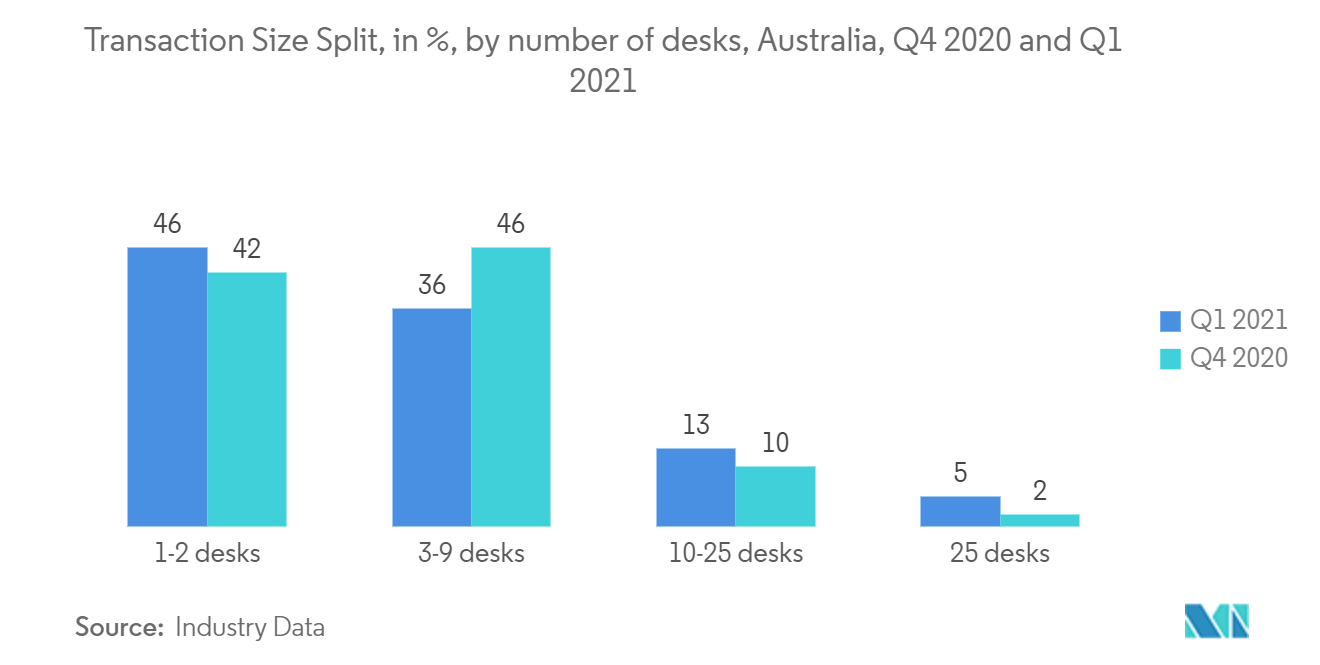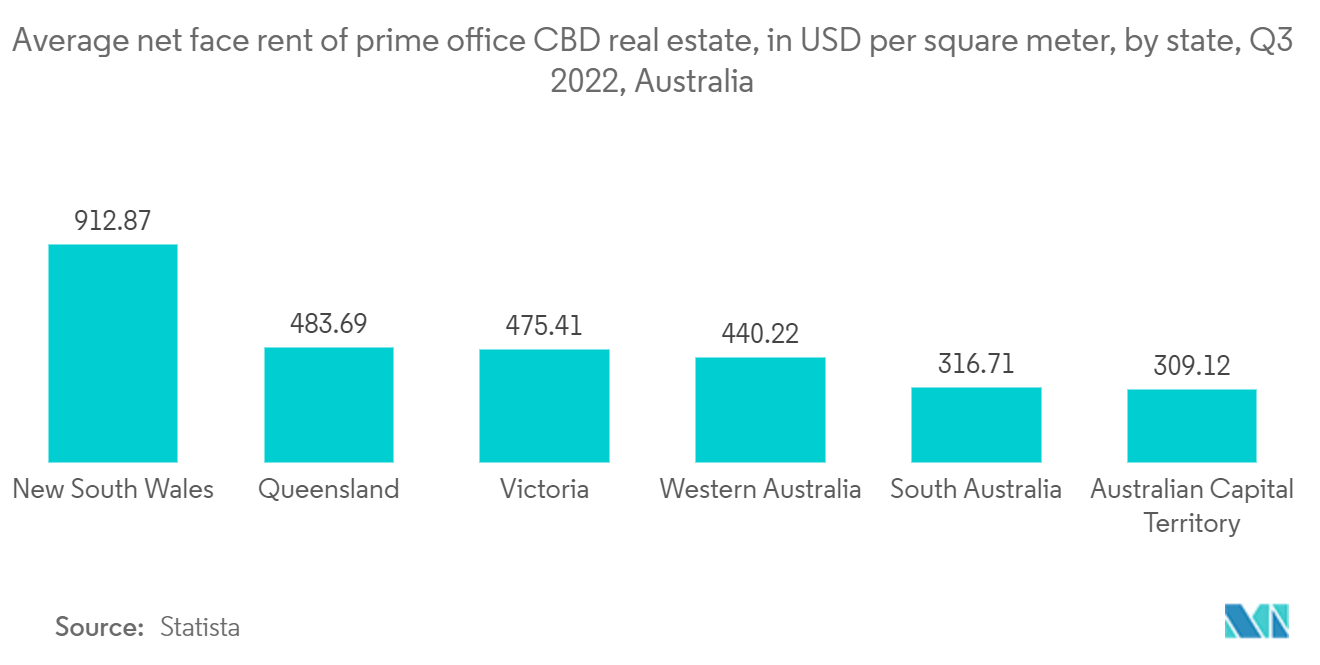Market Trends of Australia Flexible Office Space Industry
This section covers the major market trends shaping the Australia Flexible Office Space Market according to our research experts:
Demand for Larger Spaces driving the market
In the coming years, all major cities in Australia are expected to see massive development of flexible working space.Companies are more interested in acquiring dedicated and secure private offices for one to 100 employees.While remote working will supplement future workplace methods, it will not completely replace them. Large corporations, in particular, still require a central headquarters to strengthen their brand and culture. In Q1 2021, 18% of all flex space inquiries in Australia were for 10+ workstations, while demand for 1-2-person offices fell by 14% since Q1 2020.
In the last two years, there has been a shift toward larger companies using flexible space, while smaller companies have gotten better at working from home. Large floor plates are now available from a number of flexible workspace providers. This makes it easier for corporate firms to use flex space, which was hard to find in the past. Also, businesses can take advantage of cheaper flex workstation rates in Central Business District (CBD) areas, which lets them get high-quality space in a central location for less money. The increased provision of larger spaces and floor plates within the flexible market and relatively lower rates are proving to be advantageous for companies looking to occupy agile workspace.

The demand for CBD (Central Business District) offices increasing which boosting the market
According to Source, despite market uncertainty, face rents in Sydney, Melbourne, Brisbane, and Perth were constant or higher in Q3, indicating new and higher quality property coming online. While increased incentives across the country are limiting future effective rental growth, net absorption within better grade supply and significant pre-commitments indicate that the flight to quality is still on.
In the Sydney CBD, premier face rentals increased by almost 2% in the third quarter to average USD 925 sqm, owing to the opening of new premium space, such as Quay Quarter Tower, and the restoration of A-grade structures. In the face of rising vacancies, prime incentives remained strong at 34%. As a result, gross effective rents increased by roughly 2% during the quarter, representing a 4.8% year-on-year increase.
While inquiry levels in the Melbourne CBD office market were up year on year, many larger clients opted for shorter-term extensions. Prime incentives are stabilizing at 39%, but are around 2% lower than in 2021. Prime net effective rents continued to average USD 410 sqm in Q3, a 5.3% rise year on year. Gross face rentals in all office classes in Brisbane CBD increased in Q3. Higher incentives have mostly compensated for this, with prime incentives currently averaging 42%. This resulted in prime gross effective rental increase of 0.6% in the third quarter to USD 460 sqm, and 3.1% year to date.

